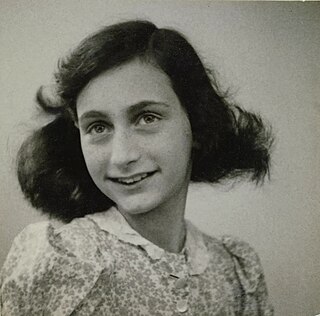
The House of Orange-Nassau is the current reigning house of the Netherlands. A branch of the European House of Nassau, the house has played a central role in the politics and government of the Netherlands and Europe especially since William the Silent organised the Dutch Revolt against Spanish rule, which after the Eighty Years' War (1568–1648) led to an independent Dutch state.

Veere is a municipality with a population of 22,000 and a town with a population of 1,500 in the southwestern Netherlands, in the region of Walcheren in the province of Zeeland.

The National Socialist Movement in the Netherlands was a Dutch fascist and later Nazi political party that called itself a "movement". As a parliamentary party participating in legislative elections, the NSB had some success during the 1930s. Under German occupation, it remained the only legal party in the Netherlands during most of the Second World War.

Anton Adriaan Mussert was a Dutch politician who co-founded the National Socialist Movement in the Netherlands (NSB) in 1931 and served as its leader until the party was banned in 1945. As such, he was the most prominent Dutch fascist before and during World War II. Mussert collaborated with the German occupation government, but was granted little actual power and held the nominal title of Leider van het Nederlandsche Volk from 1942 onwards. In May 1945, as the war came to an end in Europe, Mussert was captured and arrested by Allied forces. He was charged and convicted of treason, and was executed in 1946.

Hendrik Willem van Loon was a Dutch-American historian, journalist, and children's book author.
Antonius is a masculine given name, as well as a surname. Antonius is a Danish, Dutch, Finnish, Latin, Norwegian, and Swedish name used in Greenland, Denmark, Norway, Sweden, Finland, part of the Republic of Karelia, Estonia, Belgium, Netherlands, Suriname, South Africa, Namibia, and Indonesia, while Antoníus is an Icelandic name used in Iceland. It is also the source of the English personal name Anthony, as well as a number of similar names in various European languages.

Despite Dutch neutrality, Nazi Germany invaded the Netherlands on 10 May 1940 as part of Fall Gelb. On 15 May 1940, one day after the bombing of Rotterdam, the Dutch forces surrendered. The Dutch government and the royal family relocated to London. Princess Juliana and her children sought refuge in Ottawa, Canada until after the war.

Annelies Marie "Anne" Frank was a Jewish girl who kept a diary in which she documented life in hiding under Nazi persecution. She is a celebrated diarist who described everyday life from her family hiding place in an Amsterdam attic. One of the most-discussed Jewish victims of the Holocaust, she gained fame posthumously with the 1947 publication of The Diary of a Young Girl, in which she documents her life in hiding from 1942 to 1944, during the German occupation of the Netherlands in World War II. It is one of the world's best-known books and has been the basis for several plays and films.

Westkapelle is a small city in the municipality of Veere on the island Walcheren, in the province Zeeland of the Netherlands. On 1 January 2021, it had a population of 2,632. Westkapelle is on the westernmost tip of Walcheren and is surrounded by the sea on three sides.

Johannes de Jong was a Dutch Cardinal of the Roman Catholic Church. He served as Archbishop of Utrecht from 1936 until his death, and was elevated to the cardinalate in 1946 by Pope Pius XII.

Archbishop Damaskinos Papandreou, born Dimitrios Papandreou was the archbishop of Athens and All Greece from 1941 until his death. He was also the regent of Greece between the pull-out of the German occupation force in 1944 and the return of King George II to Greece in 1946. His rule was between the liberation of Greece from the German occupation during World War II and the Greek Civil War.

The Dutch resistance to the Nazi occupation of the Netherlands during World War II can be mainly characterized as non-violent. The primary organizers were the Communist Party, churches, and independent groups. Over 300,000 people were hidden from German authorities in the autumn of 1944 by 60,000 to 200,000 illegal landlords and caretakers. These activities were tolerated knowingly by some one million people, including a few individuals among German occupiers and military.

Casper ten Boom was a Dutch Christian who helped many Jews and resisters escape the Nazis during the Holocaust of World War II. He is the father of Betsie and Corrie ten Boom, who also aided the Jews and were sent to Ravensbrück concentration camp, where Betsie died. Casper died 9 March 1944 in The Hague, after nine days of imprisonment in the Scheveningen Prison. In 2008, he was recognised as Righteous Among the Nations by Yad Vashem.

The Reichskommissariat Niederlande was the civilian occupation regime set up by Germany in the German-occupied Netherlands during World War II. Its full title was the Reich Commissariat for the Occupied Dutch Territories. The administration was headed by Arthur Seyss-Inquart, formerly the last chancellor of Austria before initiating its annexation by Germany.

Prince Bernhard of Lippe-Biesterfeld was a German-born nobleman who was the consort to Queen Juliana of the Netherlands; they were the parents of four children, including Beatrix, who was Queen of the Netherlands from 1980 to 2013.

Abraham Asscher was a Dutch Jewish businessman from Amsterdam, a politician, and a leader of his community who attained notoriety for his role during the German occupation of the Netherlands (1940–1945).
The Jodenbuurt is a neighbourhood of Amsterdam, Netherlands. For centuries before World War II, it was the center of the Dutch Jews of Amsterdam — hence, its name. It is best known as the birthplace of Baruch Spinoza, the home of Rembrandt, and the Jewish ghetto of Nazi occupation of the Netherlands.

German–Dutch relations are diplomatic, military and cultural ties between the bordering nations of Germany and the Netherlands. Relations between the modern states started after Germany became united in 1871. Before that the Netherlands had relations with Prussia and other, smaller German-speaking nations.

Marion Philippina Pritchard was a Dutch-American social worker and psychoanalyst, who distinguished herself as a savior of Jews in the Netherlands during the Second World War. Pritchard helped save approximately 150 Dutch Jews, most of them children, throughout the German occupation of the Netherlands. In addition to protecting these people’s lives, she was imprisoned by Nazis, worked in collaboration with the Dutch resistance, and shot dead a known Dutch informer to the Nazis to save Dutch Jewish children.

The Holocaust in the Netherlands was part of the European-wide Holocaust organized by Nazi Germany and took place in the German-occupied Netherlands. In 1939, there were some 140,000 Dutch Jews living in the Netherlands, among them some 24,000 to 25,000 German-Jewish refugees who had fled from Germany in the 1930s..


















